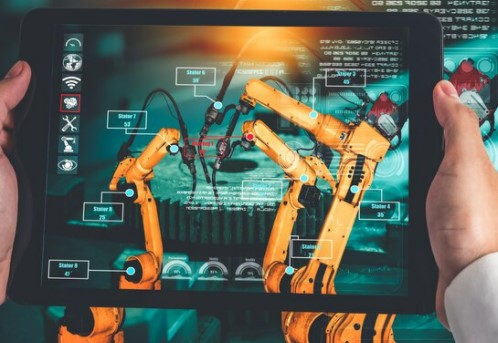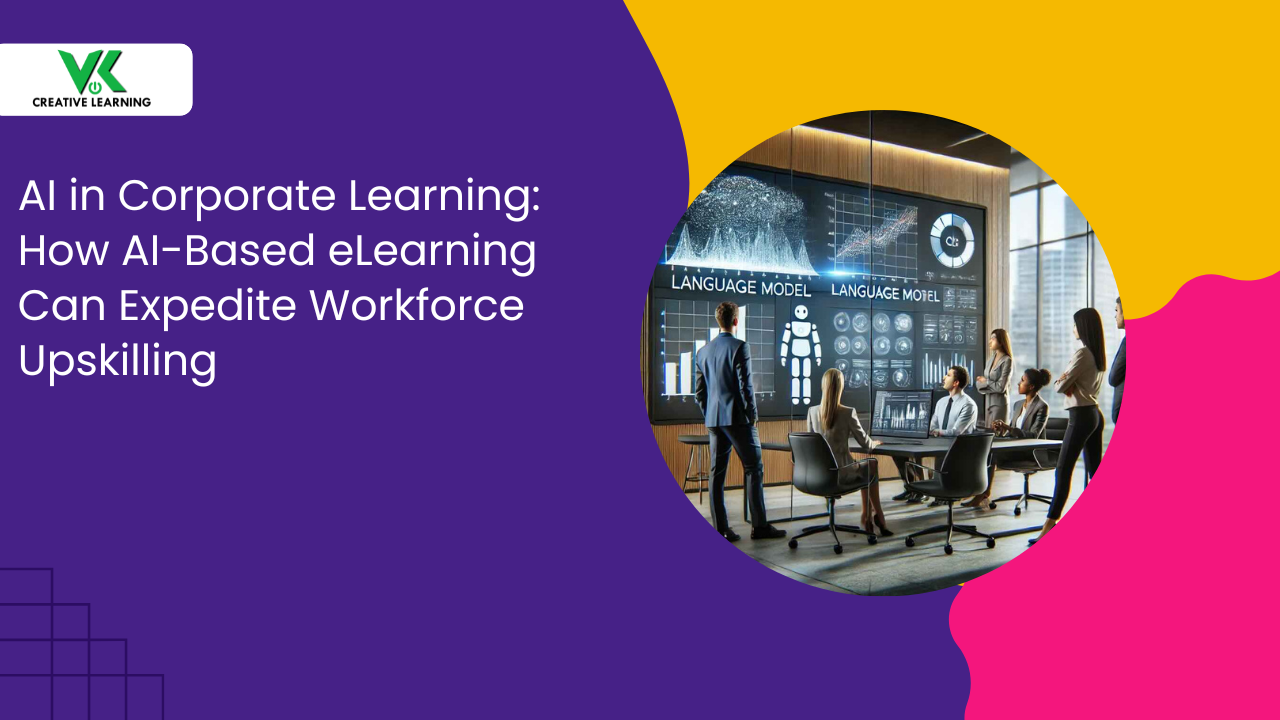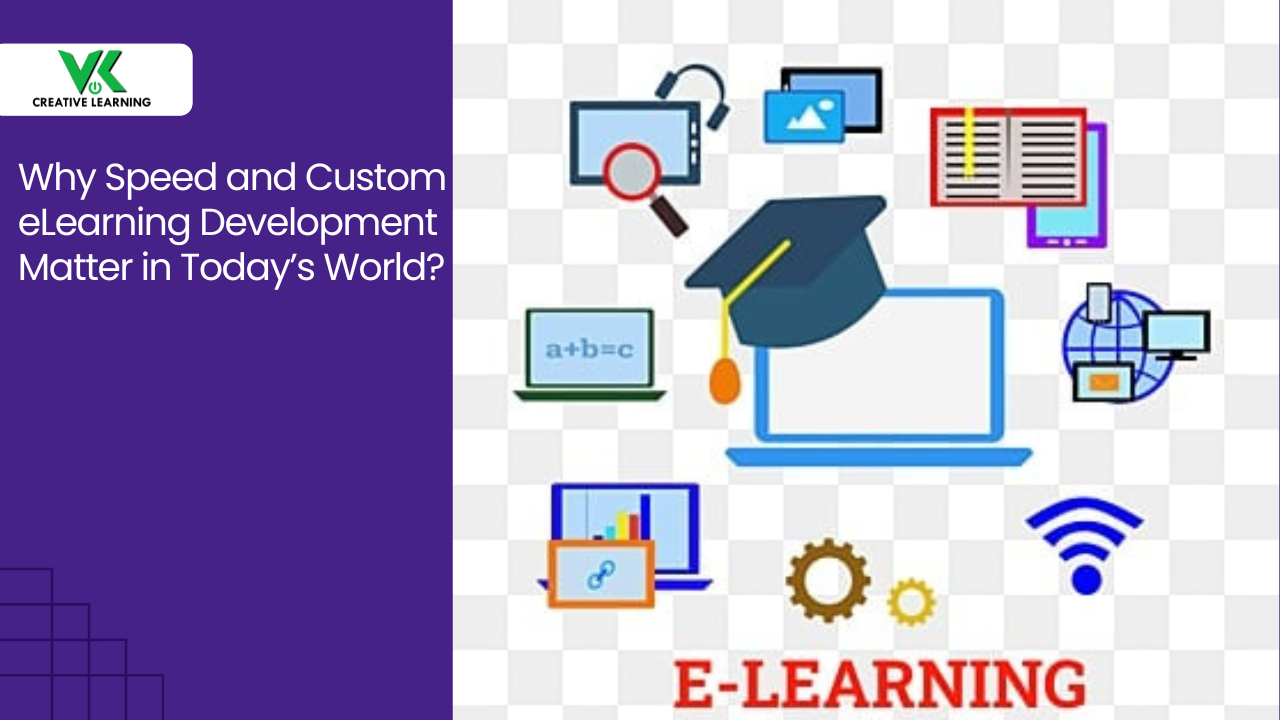How AR and VR-based eLearning solutions can be used for different real-life scenarios?
March 03, 2022
In recent years, Augmented Reality (AR) and Virtual Reality (VR) have both advanced to become some of the most popular consumer technologies. According to a Goldman Sachs study, the market for AR/VR technology would reach over $80 billion by 2025.
Long before the COVID-19, schools, colleges, and corporate training centers were utilizing augmented reality training systems. However, this is no longer a passing trend; incorporating ‘AR and VR in eLearning’ is now required to promote cognitive and affective learning in the post-COVID age. This article examines the influence of ‘AR/VR technologies on eLearning’, so if you're thinking of introducing 'AR/VR-based eLearning courses,' you could find the answers you're looking for here.
1. Enhancing capabilities with AR VR simulations.
High-risk sectors, such as petroleum, construction, medical rescuers, paramedics, firemen, and others, would be among the first to use VR simulations for training reasons. Such virtual training aids in the development of spatial intelligence; the learner's outlook and thinking abilities in unthought circumstances, and even the treatment of a phobia of heights.
Businesses may save money by reproducing genuine workplaces and the workings of complicated equipment in virtual classrooms using an 'industry-based eLearning solution.' The rationale for this is that there is no need to commit a pricey piece of equipment to a training facility and dismantle it. Instead, the operators may study the functioning of the machine in a virtual simulation utilizing an 'AR/VR-based eLearning solution,' ensuring the operators' safety. A bad choice will result in a virtual failure that will do no physical damage but will offer the learners a vital practical learning experience in their respective industries.
Safety training utilizing 'AR/VR eLearning courses' may become considerably more effective and interesting, as well as less harmful and expensive. Being a member of an LMS also means being able to do periodic reviews and track completion outcomes.
2. Analysis to offer specific sights
The days of collecting learning statistics just from your LMS reports are long gone. Data collection has never been more sophisticated than using 'AR/VR technology in eLearning.' You may now measure learners' eye contact to determine their interest in the training session.
Having these specific insights will aid in the development of eLearning courses that accurately evaluate student engagement and use them to create a learner-worthy course. As a result, it leads to a superior learning experience that satisfies your learners' expectations while also paving the road for higher ROI.
These are only certain possibilities for combining AR and VR into eLearning described here. However, you may also choose other situations such as virtual mockups of your workplace, interactive product demonstrations, a problem-centric set of circumstances learning, and other options.
3. Interactive digital classrooms, laboratories, and field excursions
It is possible to create immersive VR recordings by utilizing a 360-degree camera. Many professors already utilize this to develop learning materials, so if a student misses a lab, a lecture, or a camping trip, they may watch the recordings to understand the content instead. This also aids visual feedback.
The VR simulators can be utilized by your learners to practice the critical steps several times in order to obtain the skills they need to pass the exam.
'AR/VR eLearning solutions' may add gamification aspects to the training process while keeping it manageable, safe, and simple to monitor. This improves learning outcomes while saving time and money on consumables, transportation, and other expenditures.
4. eLearning evaluations using visual feedback
When it comes to eLearning evaluations, VR technologies encourage the use of branched scenarios, online simulations, and other tools to improve evaluation. VR software also enables for the recording of learner performance as well as the monitoring of ultimate outcomes. What makes it unique? It is possible to review the student's performance after completing a course to learn what went wrong and how they performed.
For example, if your students miss an essential stage in a procedure, they may be shown how to complete the step properly and repeat the examination later. All of this in a more improved and realistic 'AR/VR eLearning solutions,' leaving no space for uncertainties or misunderstandings.
5. Interactive gamification in eLearning courses
Gamified eLearning courses have been shown to be one of the most effective methods to make learning more engaging and enjoyable. Using 'AR and VR eLearning solutions,' you can create an immersive learning environment that might influence the future of gamification in eLearning.
With current gamification, learners can earn virtual prizes. Your learners may earn actual badges and awards, as well as tangibly climb up leaderboards, using AR and VR technology. Unlike online gamification, AR and VR enable learners to engage with points and badges physically, even holding them in their hands.
6. AR/VR eLearning courses tailored for individual learning paths
Unlike traditional eLearning routes in your eLearning courses, 'AR and VR eLearning solutions' will allow learners to travel through a learning path and interact with learning environments. As a result, your learners will experience physical interactions like never before. Similar to immersive video games, where players take multiple pathways based on their success and failures.
For example, the evaluation in an 'AR and VR eLearning course' would suggest that your learner's decision-making skills need to be improved. Due to this, students can choose eLearning courses and activities that improve decision-making skills using AR and VR technologies.
Conclusion: There are different utilizations of AR and VR e-learning course modules for numerous purposes. VK Creative Learning, one of the leading organizations, specializes in creating AR/VR-based eLearning solutions as per the requirements of the clients. It has created eLearning solutions for schools, institutes, universities, corporate organizations, and various industries to train their learners.




